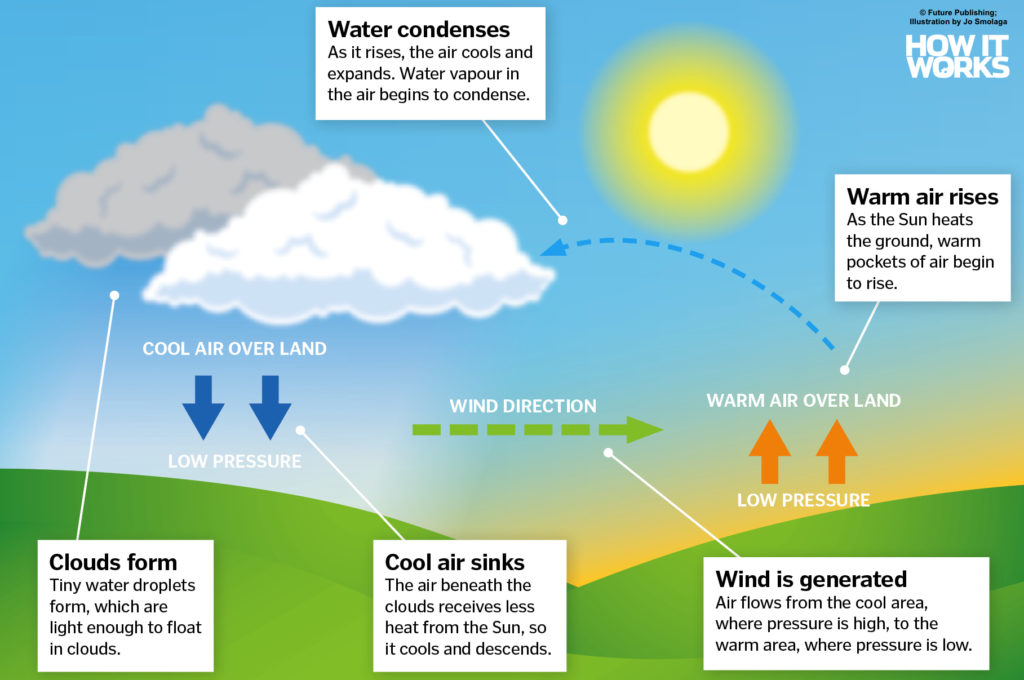How does cloud cover generate wind?
While they may seem wispy and weightless, clouds are actually a crucial part of our climate system. At any given time, 70 per cent of the planet is covered in cloud. When air at ground level is warmed by sunlight, it rises and cools, a process known as convection. Water vapour in the air condenses into water or ice droplets, which form clouds. These droplets will gradually combine into larger drops, and then fall as rain or snow. Meanwhile, the cool air descends. At ground level, air flows from cool areas, which are high pressure, to warm areas, which are low pressure, causing wind. Depending on the difference in pressure, this can result in a light breeze or a howling gale.
The convection cycle
Find out how heat is transferred to form clouds, wind and weather
Cover image by Myriams-Fotos






